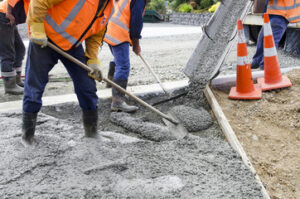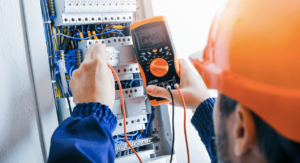Colorectal Surgeon Phoenix specializes in the lower gastrointestinal tract, which includes your colon, rectum, and anus. They are often referred to when symptoms in your large intestine require surgery.
These surgeons have rigorous specialty training with strict requirements. They perform procedures that alleviate conditions like bowel cancer, severe constipation, and hemorrhoids when medical treatments fail.

Hemorrhoids are bulging blood vessels in or near the rectum or anus. They’re common and usually cause no long-term health problems. Hemorrhoids are more common as people get older because the tissues that support the blood vessels weaken and stretch. They can also develop during pregnancy because the baby’s weight puts pressure on the anal area. Hemorrhoids can cause pain, itching and sensitivity around the anal canal. In severe cases, they can result in rectal bleeding and blood in the stool.
Many hemorrhoids go away on their own after a few days or weeks. If the symptom persists, there are home treatments that can relieve symptoms such as using over-the-counter medications with lidocaine or witch hazel, and eating more fiber to soften stools. If the at-home treatment doesn’t work, a doctor can perform a medical procedure in the office to shrink the hemorrhoids. One option is rubber band ligation, in which the hemorrhoid is wrapped with a rubber band to cut off its blood supply. Another option is sclerotherapy, in which the hemorrhoids are injected with a chemical that causes them to shrink and eventually fall off. Both procedures are less invasive than surgical removal of the hemorrhoids and have similar results.
In some patients, a doctor may decide to use an endoscope (a thin tube with a camera and light at the tip) to examine the colon for signs of hemorrhoids or other disorders of the large intestine. Endoscopic examinations such as sigmoidoscopies or colonoscopies involve anesthesia.
If a physician finds that hemorrhoids are causing symptoms, such as itching or pain in the anal canal, he or she can refer a patient to a gastroenterologist or colorectal surgeon for further evaluation and treatment. Gastroenterologists provide non-surgical treatment for hemorrhoids and can also perform a colonoscopy or sigmoidoscopy to gather information about the underlying conditions that might be causing them. A colorectal surgeon can remove the hemorrhoids surgically. They can also do other surgical procedures such as stapling and ligation, and they can provide further tests, such as blood work, to help determine the best course of treatment for the patient.
Abdominal Pain
The colon, rectum, anus and pelvic floor are all part of the digestive tract and can be surgically corrected to treat conditions like hemorrhoids and abdominal pain. When a patient is facing surgery, they may have many questions. They may worry about how much pain they will have or if they will be able to eat normally after the operation. They also want to know if they will be able to use the bathroom normally afterward.
The abdomen houses a lot of organs, including the stomach, gallbladder, liver, intestines and reproductive organs. Abdominal pain is any discomfort in this area, and it can range from the temporary effect of gas to a serious health condition that requires immediate attention. The location of the pain may indicate which organ is affected, as well. For example, the right side of the abdomen holds the appendix, kidneys and bile ducts, while the left side of the abdomen is home to the pancreas and spleen.
Abdominal pain may also be caused by conditions in other parts of the body, such as the groin or lower chest. It may also be a side effect of some medications. To help a doctor work out what is causing the pain, patients should describe their symptoms and tell them how long they have been experiencing them.
Colorectal Surgeons will be able to diagnose the cause of abdominal pain by doing tests such as blood work and an ultrasound. They may also perform a stool sample to determine if the patient has an infection in their colon or if there are any blockages. The results of these tests can be used to decide on the most appropriate treatment.
While most people do not look forward to colorectal surgery, the procedure can be life-changing for those who are dealing with medical disorders of the anorectum and rectum canal. It can relieve the discomfort and embarrassment caused by these issues. In addition, it can improve bowel function and decrease the frequency of constipation. The recovery time varies depending on the surgical procedure performed, but patients can expect to be able to eat and use the toilet normally afterward.
Rectal Bleeding
Bleeding from the rectal area, also known as hematochezia, can often herald pathology in the lower gastrointestinal tract. However, it can also originate from diseases specific to the rectal area such as hemorrhoids, anal fissures, proctitis, or anorectal malignancy.
Rectal bleeding should always be evaluated with a consultation and examination by an experienced general surgeon. The health care provider will ask questions about the frequency and amount of the blood, how long you’ve been experiencing the problem, if there are any other symptoms such as pain in the belly or bowel movements that look black (the result of stomach acid turning the red blood to tarry-looking stool) and your family history of colorectal cancer or other diseases of the colon and anus.
The health care provider will perform a physical exam and may order a series of tests to determine the cause of the rectal bleeding. The most common test is a rectal examination and digital rectal exam. This can be done in the office by your colorectal surgeon or a trained health care professional. This procedure will evaluate the anus and rectum, and it can find many causes of rectal bleeding. Other tests that may be ordered include an X-ray or ultrasound, an esophagogastroduodenal endoscopic examination, and blood work such as a complete blood count, electrolytes, and a hemoglobin or hematocrit level.
Depending on the test results and your age, health care provider will decide what treatment to recommend. If your doctor thinks the problem is in the rectum or colon, they will probably recommend a test called anoscopy or sigmoidoscopy. Both of these procedures allow your doctor to see inside the rectum and the entire colon, which is about 6 feet long. During these procedures, the doctor can remove polyps or cancers and a small portion of the tissue that’s causing the bleeding.
If the bleeding is more severe or if it’s coming from higher up in your digestive tract such as the stomach, then you might need to have more extensive surgery. This could include a colonoscopy with a biopsy, or possibly a colostomy (creating an opening in the abdomen where stool can go through into a collection bag). You might also need to have your gallbladder removed if you’re having problems with it.
Blood in the Stool
Seeing blood in your stool can be frightening and overwhelming, but it is rarely a sign of serious problems. However, it is important to get the problem checked out by a doctor as soon as possible. He or she will determine the cause of the bleeding and recommend treatment as appropriate.
The gastrointestinal tract is long, so the bleed may originate from any place along it. Bright red blood in your stool can be caused by hemorrhoids or anal fissures. It can also be the result of constipation, inflammatory bowel disease or diverticulosis. In older adults, it can also be the result of colorectal cancer or other colon disorders.
If you see only bright red blood on toilet paper when wiping, but not in the actual stool, this usually indicates that the bleed is coming from the rectum or anus. This type of bleeding is not uncommon, especially in people who have had a child recently or are dealing with constipation. In some cases, the doctor may prescribe a hemorrhoid cream or other treatment to help control the bleeding.
Dark red or maroon blood indicates that the bleed is higher up in the GI tract, such as from a peptic ulcer in the stomach or bleeding in the small intestine. Black or tarry stool is a sign of more serious problems, including colorectal cancer. This type of bleed may not be visible to the naked eye, but is often discovered in a lab test known as a fecal occult blood test.
Bleeding in the rectum and lower colon is less common than bleeding in the upper GI tract. But, if you notice any signs of rectal bleeding or have a history of colon cancer in your family, it is important to seek evaluation promptly.
A colorectal surgeon will perform a detailed examination of the rectum and other parts of your abdomen. He or she will also ask you to discuss your symptoms and medical history. You should be as honest as possible so the doctor can provide the best care. If you do not want to undergo surgery, a colorectal surgeon may suggest other types of treatments such as medications or other lifestyle changes.






